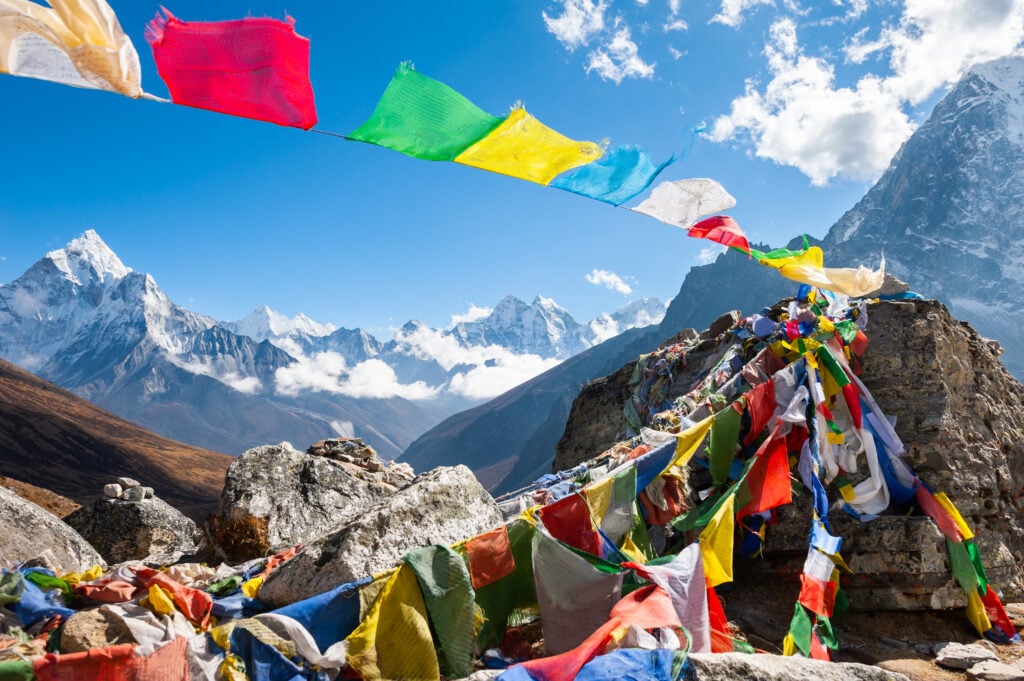
To visit Nepal is to discover the cradle of Buddhism, where Buddha was born in 623 BC. A spiritual and cultural destination, the country is home to a host of architectural treasures, such as the stupa at Swayambhunath, one of the oldest in the country, and Bodnath, one of the oldest .Travelling in Nepal also means being on the road to Kathmandu, which was the goal of an entire generation of travellers in the 70s. Today, Nepal has become a paradise for trekkers who come to hike alongside Everest, the roof of the world, or to tour the Annapurnas. From trekking to canyoning and rafting, Nepal's natural beauty is waiting to be discovered. To make sure you don't miss out on any of Nepal's treasures, here are a few must-sees.
1. Kathmandu, a mythical destination
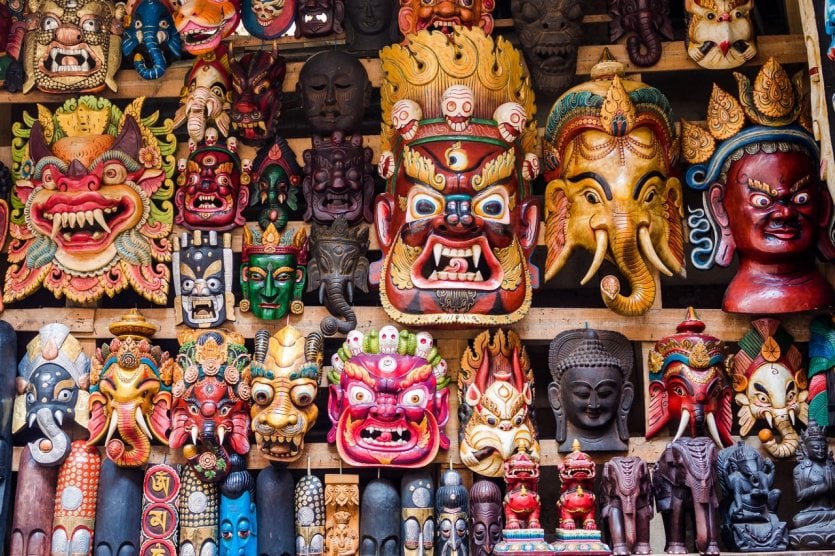
One of Asia's must-see capital cities... It's hard not to associate Kathmandu with a hippie destination! In the late 1960s, Kathmandu was the goal of many young Westerners, who travelled thousands of kilometers by van to reach their Eldorado: Buddha's homeland. All that remains of this flower power era is Freak Street and the tourist district of Thamel, where numerous stalls still sell flower power t-shirts and all kinds of colourful bags. Despite the terrible earthquake of 2015, Kathmandu still charms visitors with its colourful atmosphere, from the bazaar of Asan Tole to the temples and palaces of Durbar Square. Today, Kathmandu has become the capital of trekkers who come to challenge the Himalayas .
2. What to do in Nepal Visit Bhaktapur, an enchanting kingdom-city
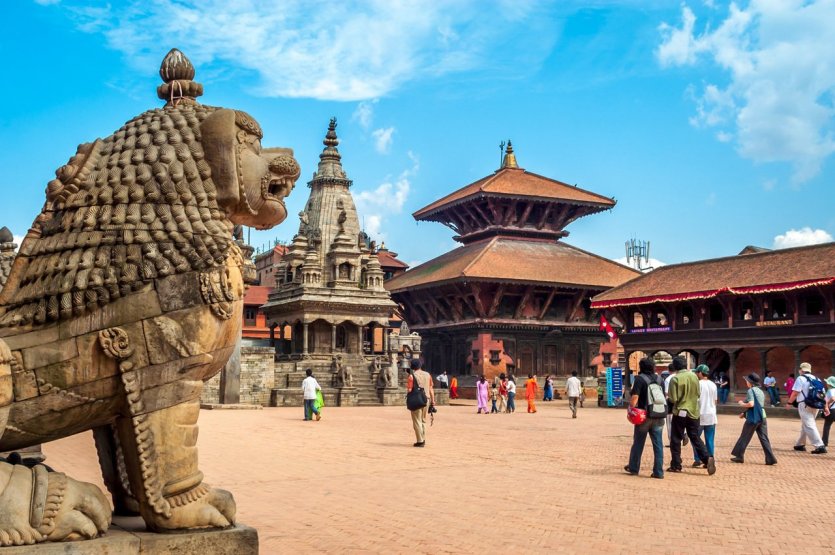
Bhaktapur isthe best-preserved medieval city in the Kathmandu Valley. This is why Bertolucci chose to shoot his Little Buddha in the royal palace of Durbar Square. Also worth a visit is the Dattatreya temple, built entirely from the wood of a single tree. Each of its three storeys is dedicated to Brahma, Vishnu or Shiva. As for the Nyatapola pagoda, you won't want to miss it, towering over the entire city at 30 m and five storeys high!
3. Climb Everest, the roof of the world
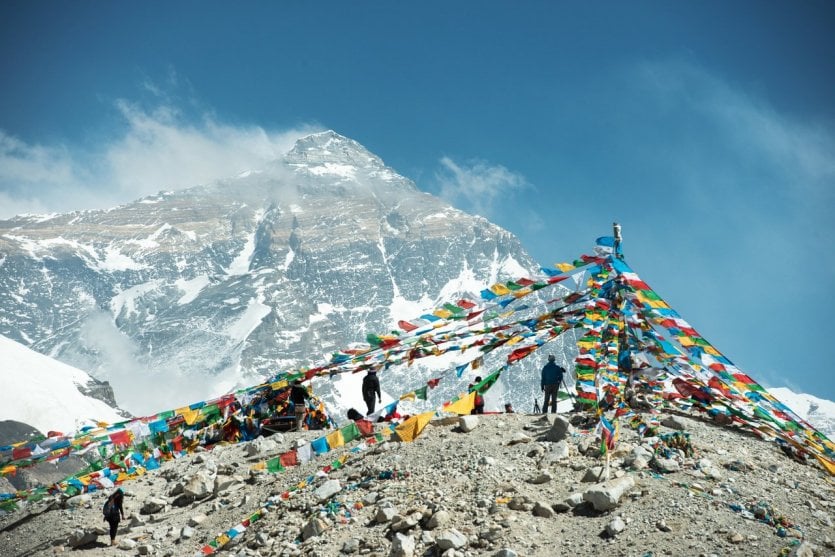
Nepal, with its peaks some of which reach over 8,000 m, is the ultimate goal for many seasoned trekkers. From its height of 8,848 m, Everest watches over Nepal and forms a natural border between Nepal and Tibet. Named Sagamartha, "the largest ocean" in Nepalese, it is not only the highest peak in the Himalayas, but also in the world! Every year, many mountaineers trek to conquer its legendary slopes, watch the world's highest mountains unfold before their eyes and take well-deserved breaks in villages and monasteries. Everest is recognizable by its black, windswept cap.
Tempted by a trek in Nepal? Check out our dedicated article "Top 11 hiking and trekking holidays" and our TOP 5 Himalayan treks!
4. What to do in Nepal Go to Bandipur, Newar land
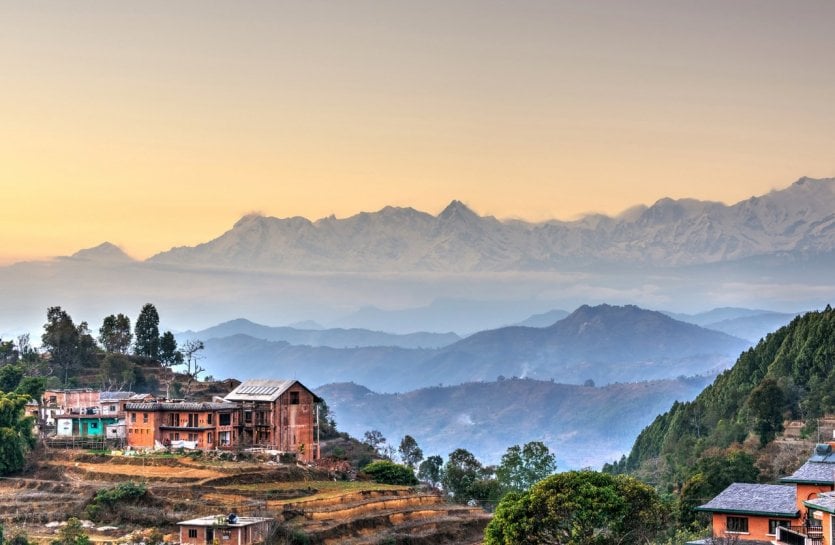
Nepal is one of Asia's top destinations for backpackers, and for good reason! Nestled in a valley between Kathmandu and Pokhara, Bandipur is the perfect place to discover traditional Newar architecture. The small red-brick houses lining the pedestrianized streets in the center give the village an undeniable cachet and recall its golden age. Indeed, in the 19th century, the Newar community made Bandipur an important commercial hub on the route between India and Tibet, skilfully taking advantage of its exceptional geographical location. Built on a hill, Bandipur offers a panoramic view of the Annapurna range.
5. Patan, the "City of Beauty
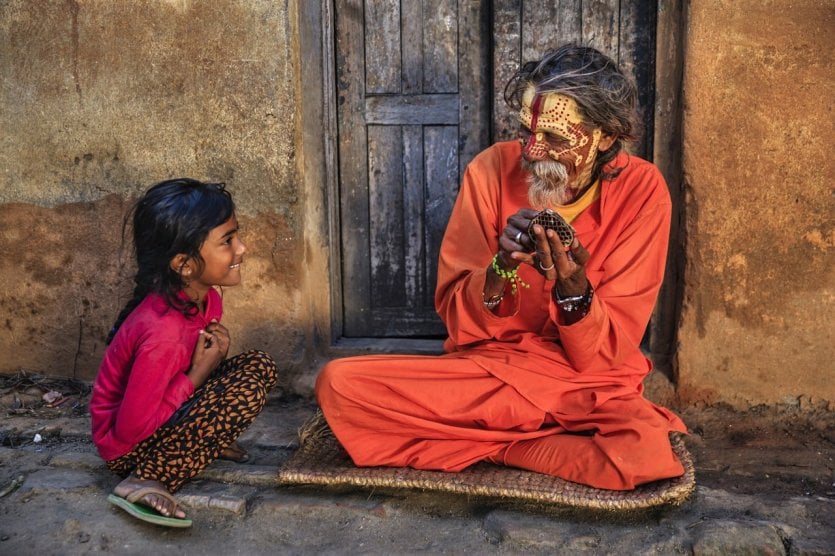
Surrounded by four impressive ancient stupas, Patan is one of the oldest royal cities in the Kathmandu Valley. Nicknamed Lalitpur, or"City of Beauty", the city is populated mainly by the Newar community, who have been practicing Buddhism here since time immemorial. Along the narrow streets of Patan, visitors can discover countless temples, such as the Khumbeswar, dedicated to Shiva. As in Kathmandu and Bhaktapur, numerous pagodas face the royal palace in Durbar Square.
6. What to do in Nepal See the Bodnath stupa, a Buddhist sanctuary
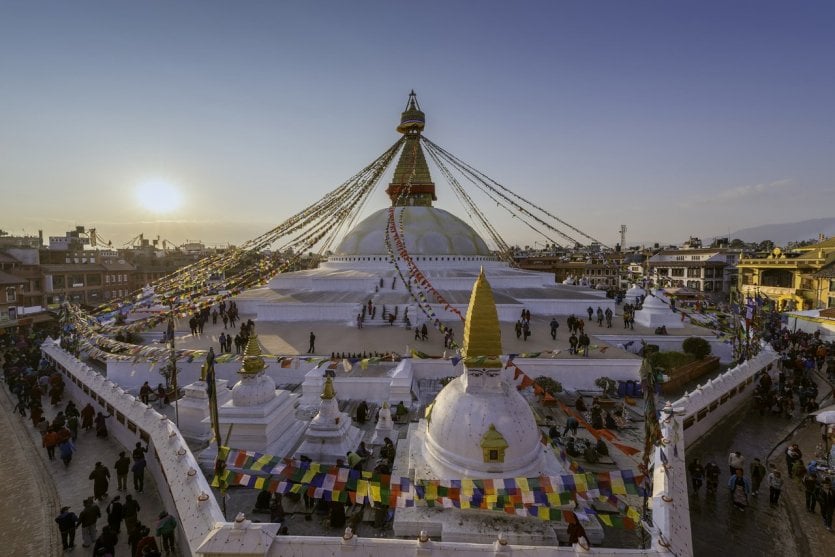
The Bodnath stupa is one of the largest stupas in the world. From the base, its terraced structure symbolizes the five Buddhist elements: earth, water, fire, air and the dome that leads to space. The two large blue eyes painted on its white façade seem to keep a mysterious watch over the surrounding area. Every day, numerous devotees come to activate the prayer wheels that encircle the edifice, making the Bodnath stupa one of Nepal's most fervent Buddhist sites.
7. Swayambhunath stupa, the monkey temple

West of Kathmandu, atop a hill, the Swayambhunath stupa dominates the valley. To reach this edifice, you have to climb a 365-step staircase, watched by the countless monkeys that have taken possession of the stupa over the years. An unusual sight! A visit to the Swayambunath stupa is a circular affair, with countless temples and monasteries, a museum and five small sanctuaries.
8. What to do in Nepal Pokhara, in the heart of the mountains
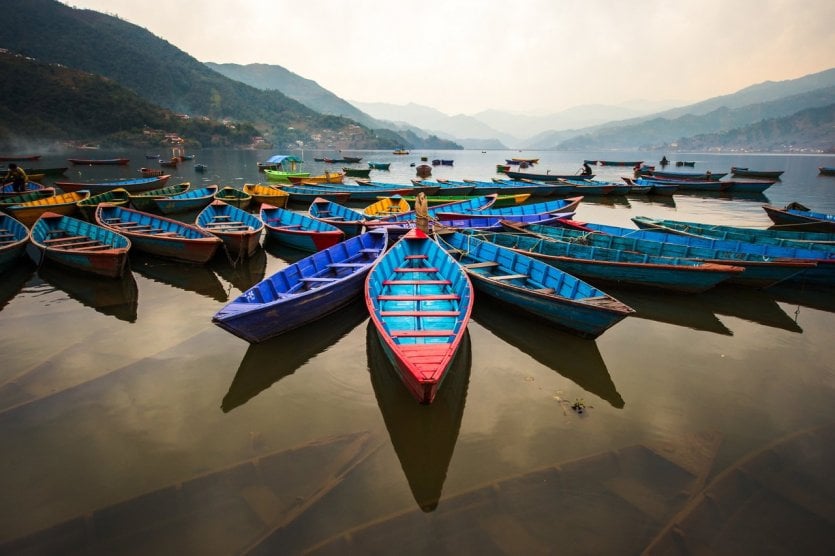
At an altitude of 900 m, in a wide valley surrounded by mountains, Pokhara is the ideal place to go trekking: even if you don't climb the high peaks that surround the city, they will be part of all your hikes. Among the highest peaks is Dahaulagiri, which rises to 8,167 m and pierces the horizon. In addition to this fabulous mountain landscape, Pokhara is also bathed by rivers straight from Annapurna, feeding mountain lakes and gorges to be discovered along the trails.
9. Lumbini, the cradle of Buddha
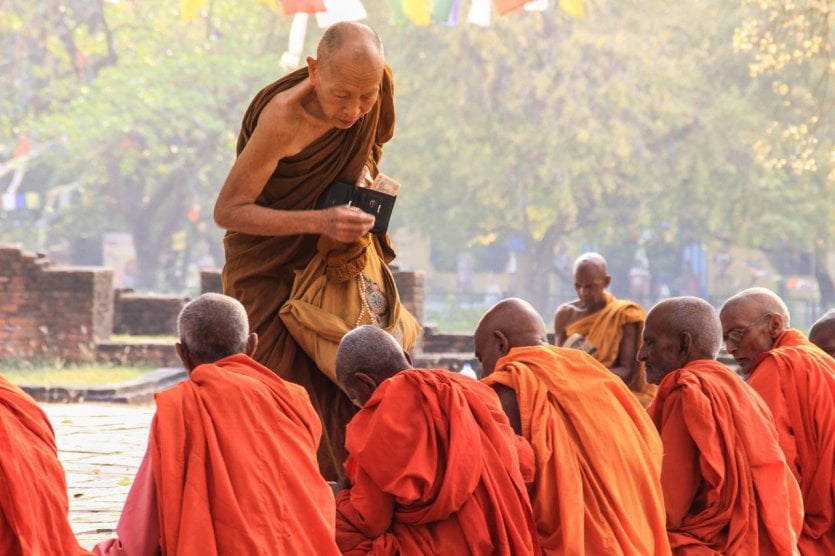
A Unesco World Heritage site since 1997, Lumbini is the birthplace of Siddharta Gautama, the Buddha: he was born here in 623 BC. Discovered during recent excavations, the Maya Devi monastery and the Puskarni pond are among the village's most spiritual sites, since it was here that Buddha is said to have taken his first purifying bath. The commemorative pillar erected by Emperor Asoka has become a major Buddhist pilgrimage site.
10. What to do in Nepal Discover the flavours of Nepalese cuisine
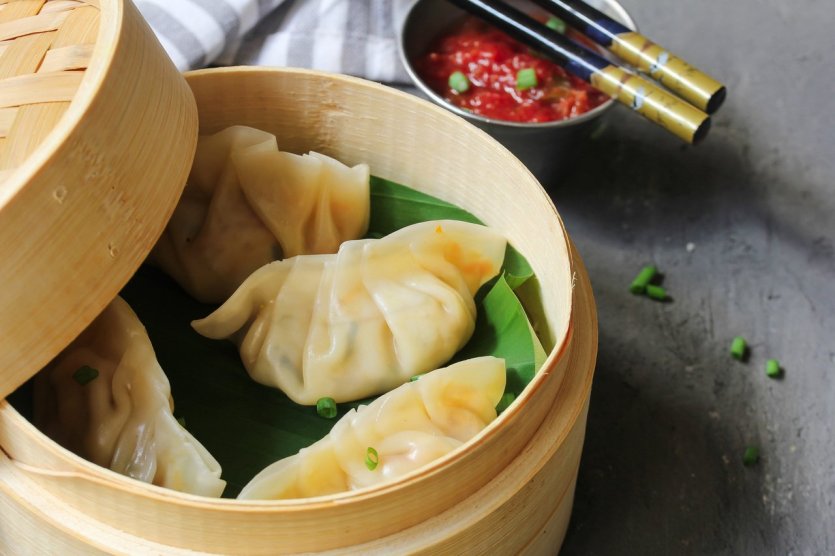
Like the Indian cuisine to which it is closely related, Nepalese cuisine is predominantly vegetarian. The most widespread specialty is Dal bhat, a tasty mixture of rice, lentils and vegetables that can be found in every restaurant in the country and eaten at any time of day. You must also try the irresistible momos, small fried or steamed ravioli stuffed with meat or vegetables. Bonus: Nepal is a vegetarian's paradise, so vegetarians will have no trouble finding tasty dishes at low prices! Discover our dedicated article "Top 10 succulent dishes to discover on your travels".
11. Viewing Everest from Nagarkot
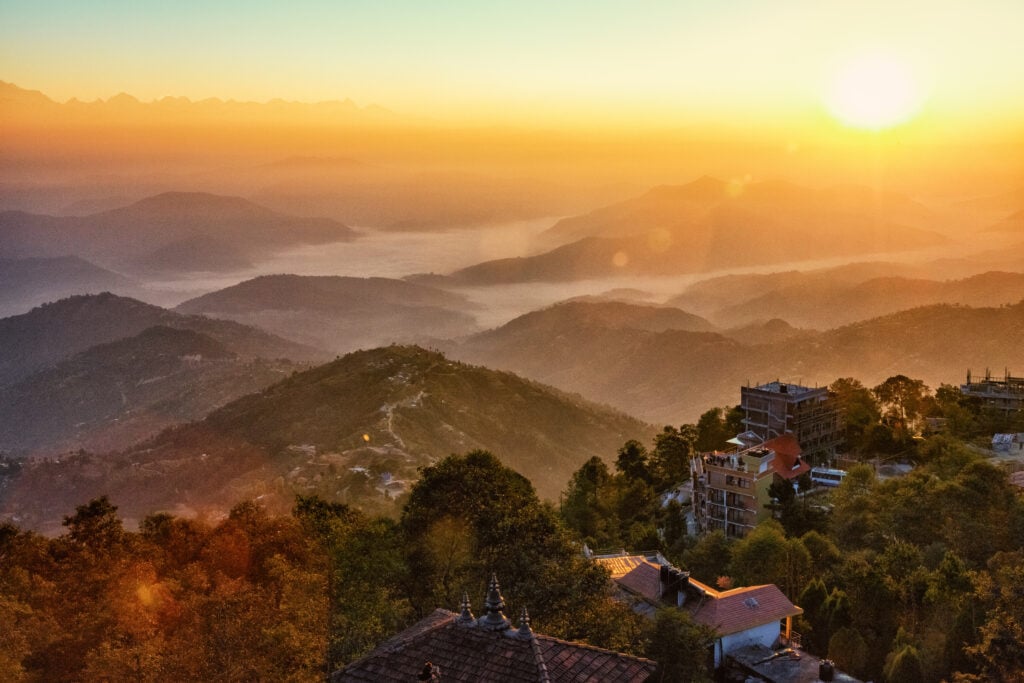
The panorama stretching from Langtang Himal to Gaurishankar, and sometimes even from Annapurna to Everest, is the village's main attraction (except during the monsoon season). Up there, you'll be able to watch the sunrise and sunset at strategic times. Enjoy the peace and quiet of the countryside, as the town offers no major attractions! A series of hotels cover the ridge and the best spots for Himalayan views. From Nagarkot, you can walk to some of the valley's most picturesque sites.
12. What to do in Nepal Going to Dhulikel
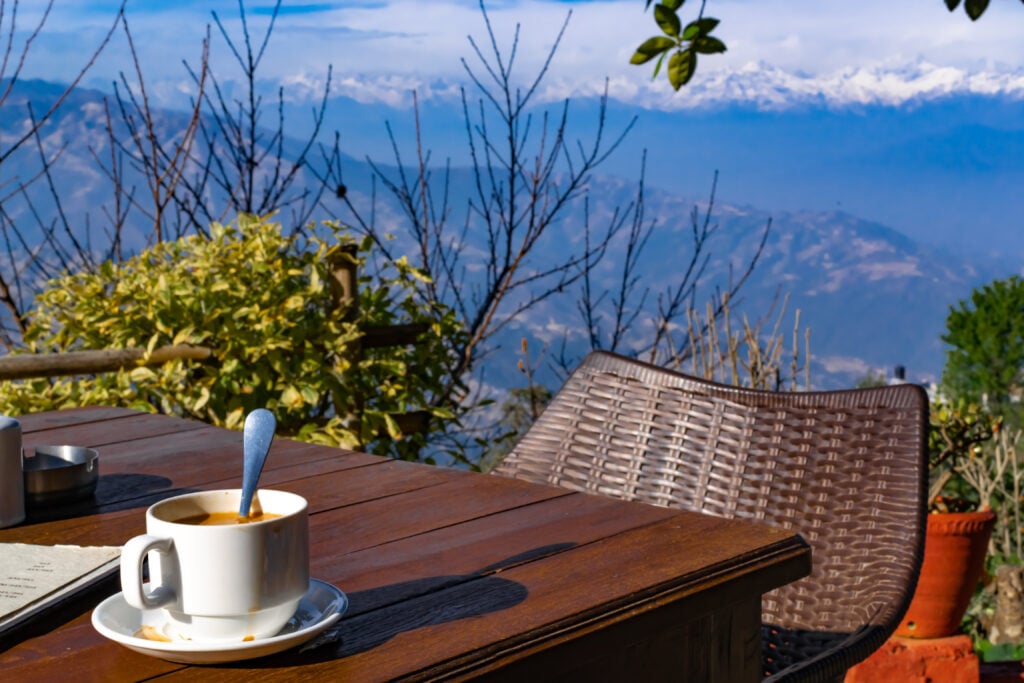
Less accessible than Nagarkot, Dhulikel also offers a fine panorama of the Himalayan range. This Newar town is the starting point for a day's hike to the Namobuddha monastery, where you can also stay. Allow 3 hours on foot via the Kali temple. Dhulikel is also a livelier and more attractive city than Nagarkot: you can stroll through the old town and main square, near the small temples that give the town a certain charm, such as the Vishnu temple or the Bhagwati Shiva, Ganesh and Gita temples.
13. Langtang National Park
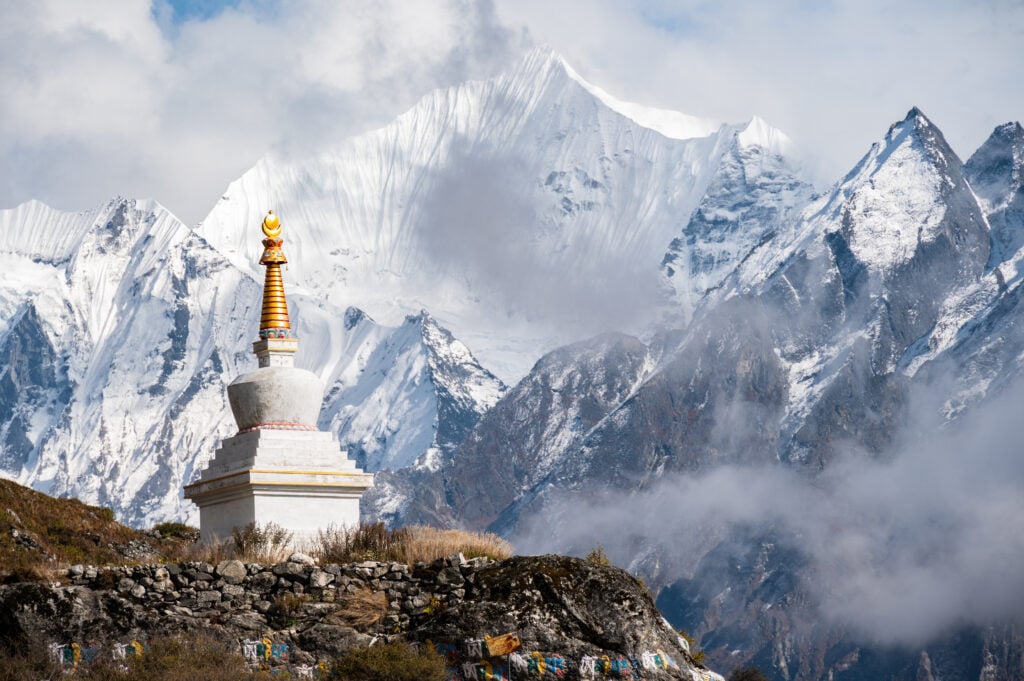
Located to the north of Kathmandu, on the Tibetan border, Langtang National Park is a prime location for all trekking enthusiasts , whether short or long, easy or more complicated. This park, representative of the central Himalayan ecosystem, ranges in altitude from 1,000 m to 7,245 m, and covers 1,710 km2 of tropical forest, alpine scrub and eternal snow. It is home to 32 mammal species, 246 bird species and 3,000 species of flowering plants, including 15 endemic species.
14. What to do in Nepal Safari in Chitwan National Park
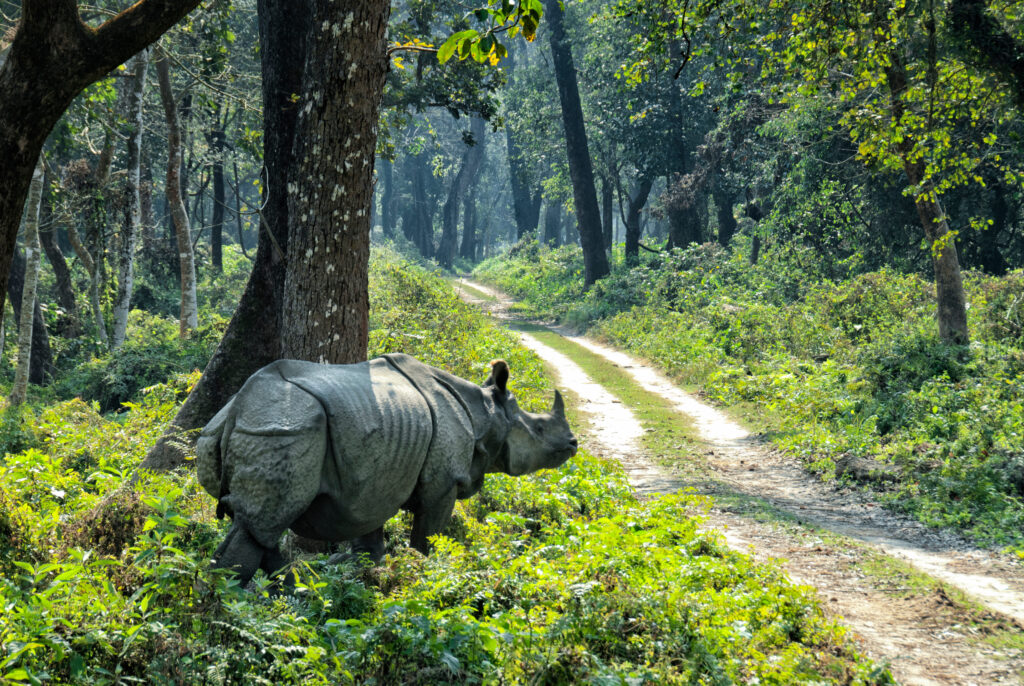
The maharajas used to organize huge drives here in honor of princes from Europe: today, Chitwan National Park is Nepal's first national park. Listed as a UNESCO World Heritage Site for its incredible biodiversity, it stretches over 932 km2 and is home to tigers and one-horned rhinoceroses, as well as monkeys, bears, panthers and gavials (swamp crocodiles). It's the most easily accessible park in Nepal, and a must for a real safari . We advise you to come during the dry season, around April-May, to have a better chance of seeing animals moving between the waterholes.
15. Try an unusual activity: the world's most extreme zip line
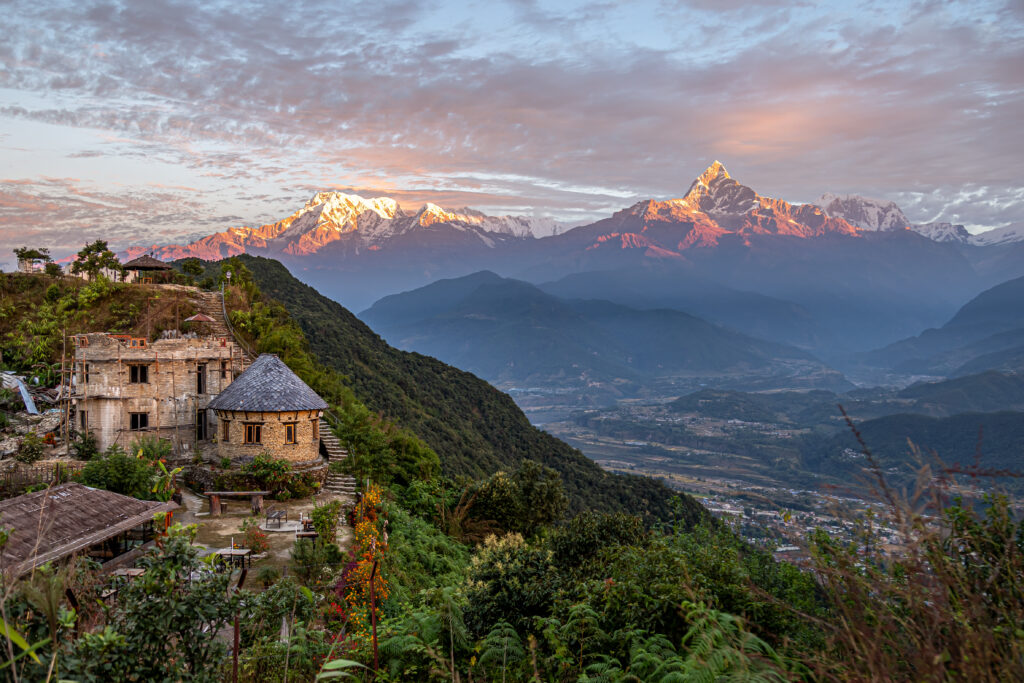
This is one of the world's most unusual activities. Located in Nepal, the launch pad for the world's most extreme zip line is at the top of Sarangkot Hill, itself overlooking the sublime Pokhara Valley. The difference in altitude is 600 m and the zip line is 1.8 km long. Enough to chill the spirits of some. But for those who still want to try it out, the view of the Annapurna range is nothing short of exceptional .
What can you visit in Nepal without trekking?
Nepal is one of those countries where you can travel on a budget. There are many tourist attractions beyond the mountain treks, offering a rich cultural and natural diversity. Here are a few popular sites to visit without trekking:
- Kathmandu: Nepal's capital is packed with historical and cultural sites, such as Swayambhunath Temple (also known as Monkey Temple), Pashupatinath Temple, Boudhanath Stupa and Patan Durbar Square Palace.
- Bhaktapur: This ancient medieval city is renowned for its traditional Newar architecture and well-preserved historic squares, such as Bhaktapur Durbar Square.
- Pokhara: Located at the foot of the Himalayas, Pokhara is a picturesque town surrounded by mountains and lakes. Here you can take boat trips on Lake Phewa, visit the Gupteshwor cave and enjoy mountain views from the famous Sarangkot viewpoint.
- Lumbini: Birthplace of Siddhartha Gautama, founder of Buddhism, Lumbini is home to many sacred sites, including the Birth Garden, Buddhist temples and monasteries.
- Chitwan National Park: This national park is home to a wide variety of wildlife, including rhinoceros unicorns, Bengal tigers, elephants and crocodiles. Visitors can take jeep safaris, elephant rides and boat trips to observe the wildlife.
- Bandipur: This charming Newar village offers an unspoilt medieval ambience, with cobbled streets, traditional houses and panoramic mountain views.
What to do in 10 days in Nepal
In 10 days in Nepal, you can discover a variety of cultural, natural and historical attractions. Here's a suggested itinerary to optimize your time:
Day 1-2: Kathmandu
- Explore Kathmandu's historic sites, including Swayambhunath, Pashupatinath, Boudhanath and Patan Durbar Square.
- Visit local museums to learn more about Nepalese history, art and culture.
Day 3-4: Bhaktapur and Nagarkot
- Spend a day exploring the medieval town of Bhaktapur, admiring its traditional architecture and historic squares.
- Head to Nagarkot for superb panoramic views of the Himalayas at sunrise and sunset.
Day 5-6: Pokhara
- Travel to Pokhara, a picturesque town surrounded by mountains and lakes.
- Take a boat trip on Lake Phewa, visit the Gupteshwor cave and enjoy the view from Sarangkot.
- Explore the local markets and relax as you take in the peaceful scenery.
Day 7-8: Chitwan National Park
- Set off for Chitwan and spend two days exploring the jungle and wildlife of the national park.
- Take a jeep safari, elephant ride and boat trip to see wildlife including rhinos, tigers and elephants.
Day 9-10: Lumbini
- Travel to Lumbini, the birthplace of Buddha.
- Explore the sacred gardens, Buddhist temples and monasteries, soaking up the spirituality and serenity of the site.
- Take advantage of your last day to relax, meditate and reflect before concluding your journey.
This itinerary will enable you to discover Nepal's main attractions, including its culture, nature and history, in just 10 days. Be sure to plan your travel and accommodation in advance to maximize your time there.
What to do in Nepal in 15 days?
With an extra 5 days, you can explore more of Nepal's iconic regions or deepen your experience in places you've already visited. Here's a possible extension to your original itinerary:
Day 11-12: Bandipur
- Travel to Bandipur, a charming, unspoilt Newar village.
- Explore the cobbled streets, traditional houses and enjoy panoramic views of the surrounding mountains.
- Soak up the medieval atmosphere and relax in this picturesque setting.
Day 13-14: Short trek in the hills
- Opt for a short trek in the hills surrounding Kathmandu or Pokhara, such as the Chandragiri trail near Kathmandu or the Dhampus trek near Pokhara.
- Enjoy the surrounding nature, picturesque villages and panoramic mountain views.
Day 15: Kathmandu
- Spend an extra day in Kathmandu to explore more of the city or shop for souvenirs.
- Visit lively neighborhoods, local markets or craft workshops to discover traditional Nepalese handicrafts.
Day 16: Return
- Take advantage of your last day to relax, unwind or take part in activities of your choice before your departure.
- Plan your return to your final destination, whether by air or by other means of transport.
This 5-day extension will enable you to explore certain aspects of Nepal in greater depth, whether by discovering new sites, participating in outdoor activities or taking the time to immerse yourself further in the local culture. Be sure to plan your travels and activities according to your personal interests and preferences.
Getting around Nepal
Due to the rugged terrain and climatic conditions, getting around Nepal by road is not always easy or comfortable. Tourist buses, however, offer decent comfort. Air service within the country is good, and really saves time compared with overland journeys... Here are the main methods of getting around Nepal:
- Plane:
- For long distances or to reach remote areas such as the Jumla district or eastern Nepal, air travel is often the fastest means of transport.
- Nepal's main domestic airlines are Yeti Airlines, Buddha Air, and Tara Air.
- Bus:
- Buses are the most common and economical form of land transport in Nepal.
- Local and tourist buses connect the main towns and villages throughout the country.
- Local buses are often crowded and less comfortable, while tourist buses generally offer a higher level of comfort.
- Car/taxi :
- It's possible to hire a car and driver or take a cab to get around towns and regions accessible by road.
- Nepal's roads can be narrow and winding, especially in mountainous regions, making travel by car sometimes slow and difficult.
All those who dream of the Himalayas know and dread it: Nepal's Lukla airport is one of the most dangerous in the world . When landing, pilots must brake as quickly as possible, as the very short runway overlooks a precipice. This is the price to pay for admiring the snow-capped peaks of the world's highest mountains!
If you're tempted by a vacation in Nepal, book your travel insurance here and take off with peace of mind!
Still not sure? Discover our dedicated article "Holidays in Nepal: 10 reasons to go".


